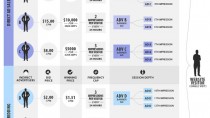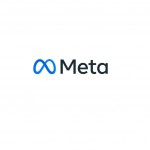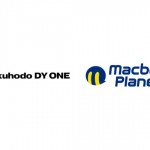Criteo社によるディスプレイ広告のアトリビューション・モデリングの現状と未来
Display advertising is an important part of digital marketing, but deciding which platform to go with and how much budget to allocate is a tricky decision for advertisers.
In recent years real-time bidding (RTB) networks have sought to revolutionise the industry by allowing marketers to bid on how much they want to pay for specific consumers.
The power to deliver the right ad, to the right consumer, at the right time is an attractive proposition for marketers, so it’s no surprise that Facebook launched its own RTB network last month.
But with so much consumer data to play with and a number of different vendors to choose from, display can appear to be a complex marketing channel for advertisers.
To simplify the process, Criteo introduced a search-like performance model for display where advertisers only pay for engagements resulting from post-click conversions.
So to find out more about targeted ads, Facebook’s new RTB network and where display should fit into an attribution model, I spoke to Criteo’s managing director for Northern Europe and Benelux Michael Steckler.
One of the main challenges with display is attribution and how to track it against other marketing channels. How should marketers measure display against their other marketing activities?
There is still a lot of work to do to understand the impact of traditional channels on online activity, but what is apparent is the role online display can play in driving new customer acquisition and also improved onsite conversion rates.
Unlike other more traditional marketing channels (such as TV, direct mail, radio or outdoor), digital performance display advertising is able to provide metrics so advertisers can understand exactly what is driving sales, but also importantly who is buying.
Criteo offers the ability to differentiate users based on their position in the purchase funnel, ranging from people who have never been to the ecommerce site and those that have visited recently through to customers that have already bought a product.
The ability for advertisers to pay for campaigns based on the user group they are trying to engage with, and pay for these campaigns at different rates, is a real advantage that online display can offer over more traditional marketing channels.
And we believe this makes online advertising one of the most effective channels available today.
Return on investment for advertising spend is essential, especially in a tough economic climate. So our main objective is to always offer unquestionable results – charging for only the click-through and aiming for that click-through to convert into a sale.
Often marketers use last-click as the main way of measuring attribution. Do you think this is the most effective or accurate method?
Establishing exactly how to measure attribution is challenging. The industry is in a position where despite its limitations, emphasis is placed on the last click model, which doesn’t always tell the whole story.
In an ideal world we would like a weighted attribution model, from the first to last click and to take account of the full consumer journey. This would enable marketers to really understand the value of all their marketing channels.
Display often generates interest for new products without it necessarily generating the last click, as we know that 70% of the products clicked on haven’t been seen before.
In addition, combining traditional search marketing with creative, visual elements means we can take into account the lasting effects of generating brand awareness.
A recent study that we conducted with Nielsen emphasises this point, as it showed that by combining searches with Criteo’s model we were able to inflate search by 28%.
Criteo has a huge amount of user data that it uses to target ads. While this means advertisers can get to the users they want, is there a danger that too much data can overwhelm marketers and make display seem too complex?
Yes, as an industry we often make display seem unnecessarily complex. Ultimately knowing the most important data that drives greater user experience and ultimately more sales is where advertisers should focus.
However we are now in a world where there is an inordinate amount of data to dissect. This takes time, investment and real technology that can automatically make decisions based on a myriad of factors.
This requires partnership with specialist companies that can manage this on a client’s behalf, which is where we can help.
Our main aim is to simplify a complex medium for marketers. Being a company that has whole heartedly embraced and even led the ‘Big data’ revolution on the internet, Criteo is able to store, manage and analyse huge amounts of data every single day – and in real time.
We try to think how a consumer would, what information they would like to receive and what they are most likely to deem important.
It’s critical to deliver a result driven campaign that is packaged simply so marketers can then make informed decisions on targeting consumers at different levels in the buying cycle.
Marketers can choose whether to focus on solely new consumers to their site, dormant consumers or those that have become unengaged for example. Our client will tell us what they need and we ensure the campaign will deliver it.
Similarly, how has the growth of RTB impacted display? Is this an area that marketers are becoming more interested in or is there still a level of ignorance about the technology?
We know that our clients’ main goal is to reach the right consumer, at the right time, with relevant and compelling offers – RTB is technology that enables a real-time transaction between publishers and buyers.
Marketers have become increasingly interested in the value of RTB and have subsequently become more aware of its benefits.
The point to remember is that RTB is merely a technology that allows the purchase of inventory, and it’s up to the seller to harness the benefits of that buying technology.
How have your clients reacted to the launch of Facebook’s new RTB ad exchange? Is there a high demand for it?
There is understandable interest in Facebook’s ad exchange. What is interesting is that the advertising model is slightly different due to the social interaction that consumers have on the site, compared to publisher sites.
As a key partner, we are working together to test campaigns on behalf of our clients to fully evaluate the best approach.
How do you think Facebook’s RTB exchange will impact its ad revenues? And will it take a lot of ad spend away from other RTB exchanges?
For our clients there is a huge opportunity, as there is a lot of valuable inventory. To understand where it fits within the overall world of RTB will take some time, given it’s just launched.
We always view additional inventory sources as an opportunity to either extend our conversation with our advertiser’s, prospective and existing – ultimately promising to drive more sales.
In that sense we would hope that additional large-scale inventory sources should drive incremental revenue to our clients.
How much does the publisher impact the effectiveness of a display ad? Is there a noticeable uplift in CTRs if the ad is placed on a premium publisher?
Many of the old rules still apply, where quality content and brand loyalty still play an important role in the consumer buying process, in this regard the importance of premium publishers should not be underestimated.
We’ve conducted research that showed consumers were 16 times more likely to click on an advert and four times more likely to purchase if it is on a premium publisher’s site.
To what extent are your clients investing in mobile display? Is there a high demand for it?
We are seeing genuine and increasing client interest in mobile commerce, but so far our clients indicate that it only constitutes between 2% to 5% of their overall sales.
However at there is massive potential for mobile devices and commerce, especially when you consider consumer behaviour with the internet in markets in Asia, for example.
So it’s an area that we are continuing to explore and test.
What do you think is holding mobile ad spend back?
Technology, consumer behaviour and better format standards across devices – but we believe these will evolve quickly.
Is there a level of personalisation that targeted ads will never go to? Similarly, has your business been affected by the new cookie law at all?
We don’t rely on consumer’s personally identifiable information – but truly anonymous data that allows us to make informed decisions about consumer behaviour.
We think there should be greater transparency and meaningful online controls, by providing users with clear guidance. We therefore support initiatives that aim to protect and inform consumers.
Personalisation of ads is about relevance and engagement. The internet can be a cluttered place for users and online advertising is a long-term medium – so we believe in being able to ensure the consumer receives advertising that is relevant to them and that the advertiser can interact with their consumers in an effective way.
Digital advertising will continue to evolve as consumer behaviour and technology does.











